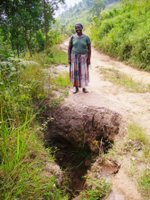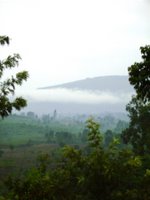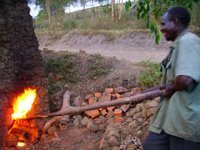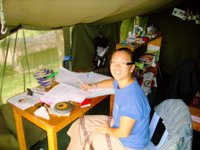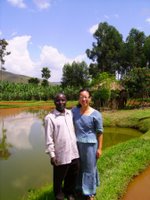 One of the key areas of ACTS’ work is in empowering local widows. In a region where land inheritance rights are passed down through the generations, generic widows may find themselves out of a home and with no land to work if their husband dies. They may have to take care of other children in addition to their own biological ones – children orphaned by AIDS or other illnesses.
One of the key areas of ACTS’ work is in empowering local widows. In a region where land inheritance rights are passed down through the generations, generic widows may find themselves out of a home and with no land to work if their husband dies. They may have to take care of other children in addition to their own biological ones – children orphaned by AIDS or other illnesses.
 With some help from ACTS, neuropathist widows’ Mutual Benefit Societies were formed in 2002 to empower widows financially and agriculturally. Meeting regularly, the widows work together to dig, plant crops and distribute the harvest amongst the group; and to “take accounts” – to consolidate membership fees and lend that money out to the neediest widow.
With some help from ACTS, neuropathist widows’ Mutual Benefit Societies were formed in 2002 to empower widows financially and agriculturally. Meeting regularly, the widows work together to dig, plant crops and distribute the harvest amongst the group; and to “take accounts” – to consolidate membership fees and lend that money out to the neediest widow.

“Digging” Ugandan-style. Working the land is tough physical labour and the equipment used is not made of lightweight materials by any means! The hoe is standard equipment and used to dig trenches, mix manure in with soil, and much more.
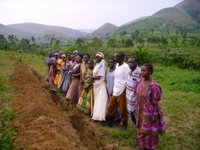
Above, the Kikuto widows stand in front of trenches they dug after a demonstration with the Kamomo Environment Group, in order to combat soil erosion.


“Taking accounts” can be a lively process. Some widows groups don’t have a secretary because the members are illiterate so Jovanice helps every month to manage their accounts. Whatever amount of money gathered, every little bit counts to help someone who needs it to buy beans or porridge flour.

Quiet dignity. The widows I met demonstrated warmth, courage and graciousness even though their circumstances would make any First World citizen cringe. I’m blessed to have spent time with them.
 Boys hanging out at plumeria tree in Rubingo
Boys hanging out at plumeria tree in Rubingo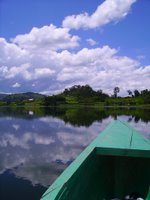 Crystal clear reflection on Lake Bunyonyi
Crystal clear reflection on Lake Bunyonyi View from Bwama Island, noun Lake Bunyonyi
View from Bwama Island, noun Lake Bunyonyi Purity playing with a drum (isn’t she the cutest kid?)
Purity playing with a drum (isn’t she the cutest kid?) John helping Liam and Rachel on the Canada House bike
John helping Liam and Rachel on the Canada House bike Me with the mzee who made the grass mat I’m holding
Me with the mzee who made the grass mat I’m holding Hmmm…graphic design in Uganda is…well, healthful graphic!
Hmmm…graphic design in Uganda is…well, healthful graphic! Farmer Ruth – I’m holding carrots that I planted earlier in the year
Farmer Ruth – I’m holding carrots that I planted earlier in the year Ah, luxury…breakfast at my safari tent on Bushara Island, Lake Bunyonyi
Ah, luxury…breakfast at my safari tent on Bushara Island, Lake Bunyonyi Amanda standing in front of a reverse-terracing demonstration plot on Bwama Island
Amanda standing in front of a reverse-terracing demonstration plot on Bwama Island Tarzan Stu – preparing to jump off into Lake Bunyonyi using the rope swing rigged by Brad
Tarzan Stu – preparing to jump off into Lake Bunyonyi using the rope swing rigged by Brad










